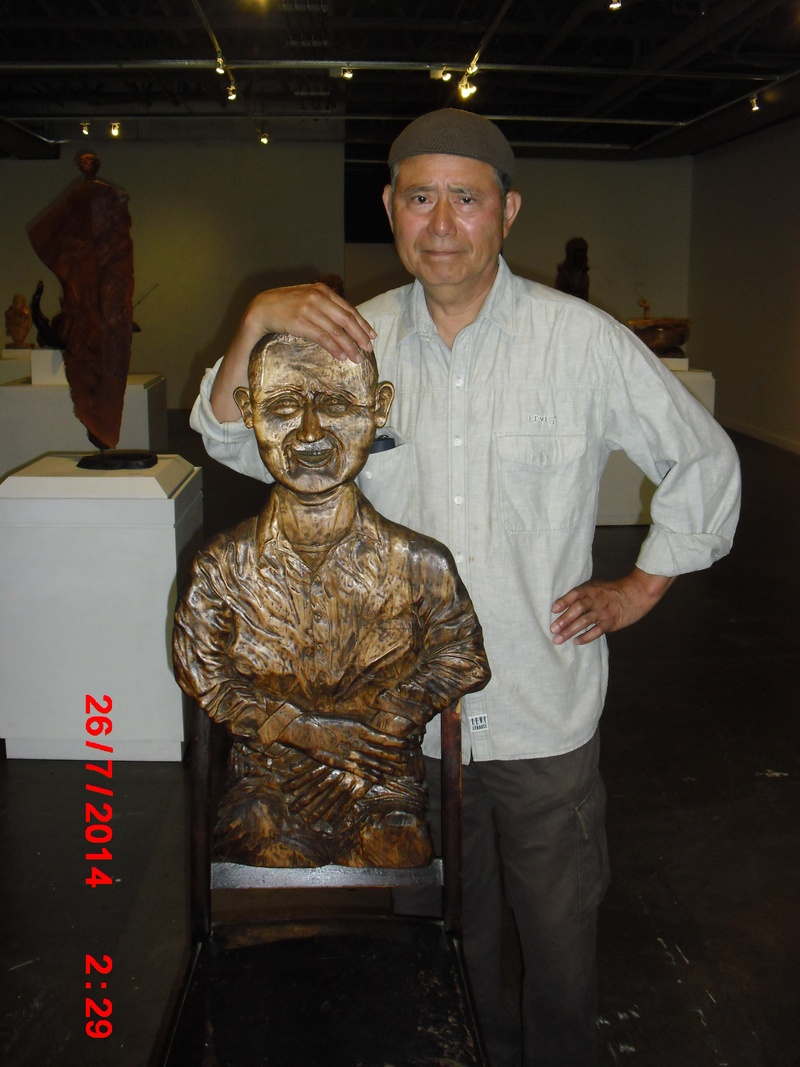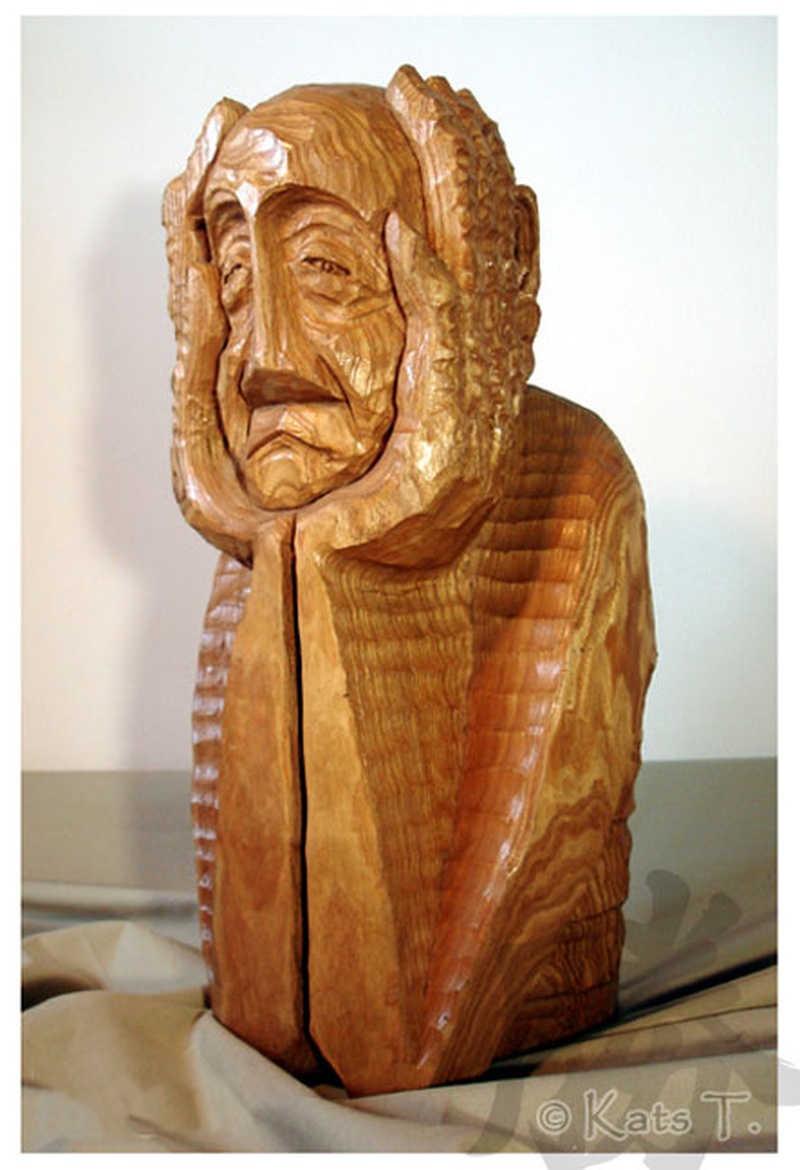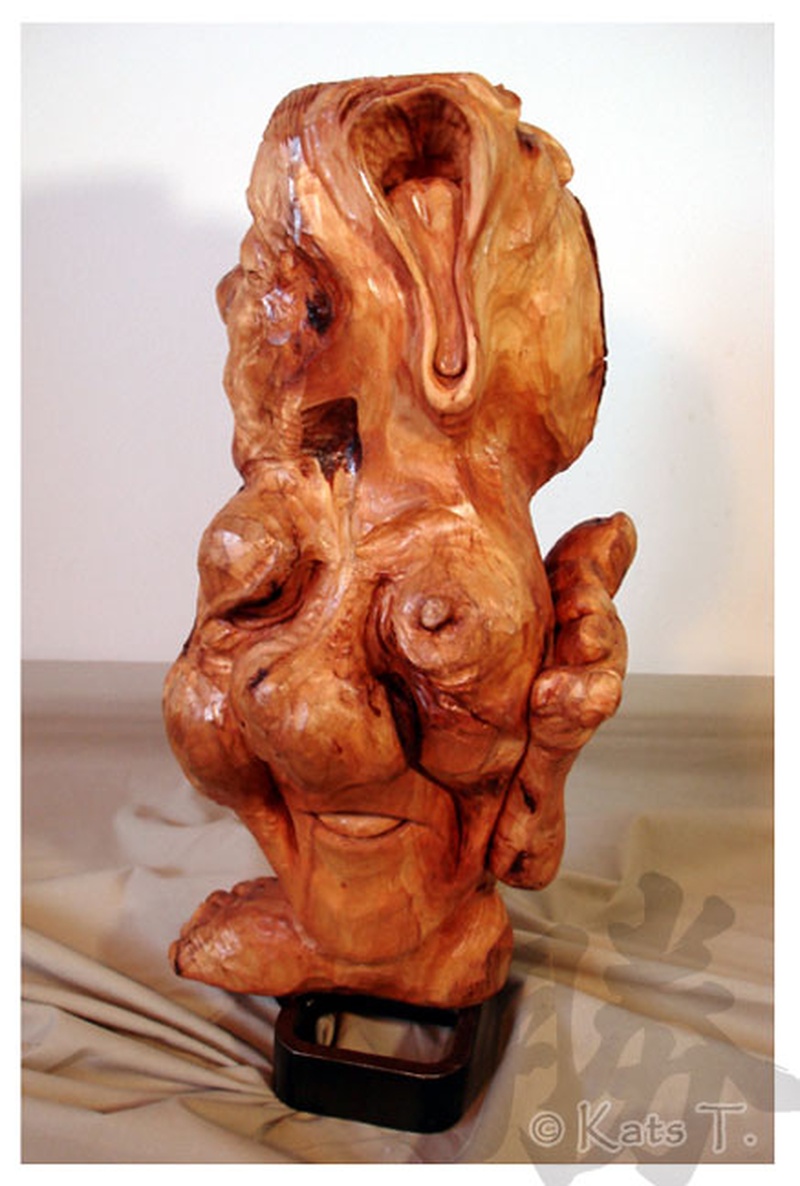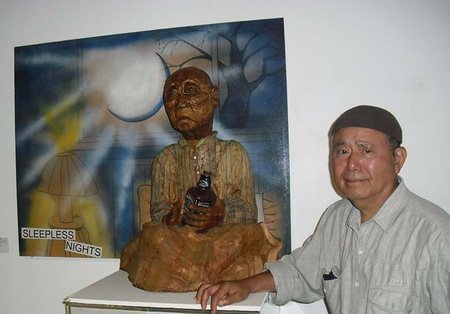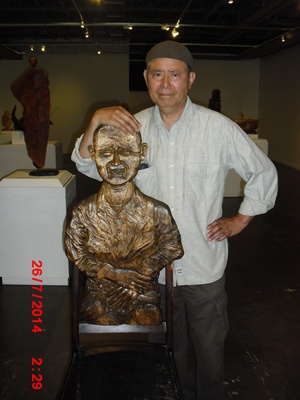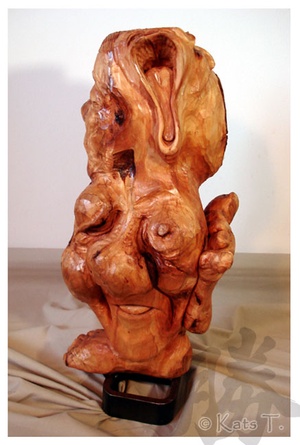Artists define culture.
Nikkei artists have been helping to define ours for generations. A few who have made a personal impact are novelist/poet Joy Kogawa, writer Ken Adachi, American writers “No No Boy” John Okada of Seattle and “Yokohama, California” writer Toshio Mori, Canadian artists Roy Kiyooka, Kazuo Nakamura, architect Raymond Moriyama (e.g., Canadian War Museum and Ontario Science Centre) as well as the late great filmmaker Jesse Nishihata and emerging ones like Chris Hope and Brendan Uegama.
In their individual ways, these artists have mapped out where we have been and give us hints as to where we might be heading in the future. These visionaries have helped to define and establish our place here as Nikkei who have helped to shape what Canada is.
If we are going to grow and mature as a community (we are stunted now) we need to give our artists a voice in the process...
I learned about Toronto woodcarver Kats Takada, 69, from Bryce Kanbara who curated his first solo show at the Toronto Japanese Canadian Community Centre this past summer.
An introspective, humble fellow, Kats immigrated to Canada from Chigasaki, Kanagawa ken in 1969. At the time, he was working as a mechanic for Chrysler in Tokyo and looking for a lifestyle change. Recalling that year, he says:
“I didn't tell anyone in my family that I was coming to Canada. I only discussed it with a good friend, someone I am still in touch with today. Chigasaki is a very comfortable and nice place to live; when I was growing up it was rural, as if our house just happened to be in the middle of a large garden. Nowadays, it is a short hour away from Tokyo and there are many houses and buildings around, filled with people I do not know.
“I was working in Tokyo and looking for a place to rent so I could move out; the prices were way too high for me though and I couldn't afford anything, so I decided to try Canada instead,” he remembers. “When I arrived, I found the pace of life to be relaxed and I was happy; the next thing I knew, 45 years had passed.” When asked about how he works, the retired truck mechanic explains, “It's a little different for each use, but, in my case, I generally start out looking for a piece of wood that has the ‘face’ I want already. By this I mean that it has a quality that matches what I envision in my head for the piece I am going to create, and so once I find a piece of wood that matches that, the rest is easy. Most pieces of wood have that already, so I think that every little piece is precious.
“I tried using stone once, but when I started carving it just made a dusty mess and I haven't tried again since. Wood is easy to find, many sizes and shapes are available, and I love the textures and smells that are released when you cut into it with a sharp edge.”
The family theme of his show evolved, he says, as the pieces were selected by curator Bryce Kanbara.
Talking about the “Mad Steve” carving which I am particularly taken with, Kats explains, “My father-in-law Steve was a quiet man who always smiled; to tell you the truth, our personalities were quite different and I never really had much to talk about with him. One time though, before he got sick, we were talking and he mentioned that before the war, he was supposed to be a soldier and go fight but instead he brought his family to Canada and avoided it. He said that sometimes he felt guilty for surviving and when I said that surviving was a good thing, he looked at me with a serious but sad look and said ‘all those other guys died though’ - that really surprised me. My mother-in-law Nancy is now 101 years old and besides a little weakness in the legs she is still going strong.”
While Parkinson's Disease has slowed him down, Kats is still carving. However, this past summer, the 30-year member of the Ontario Wood Carvers Association, says that he has mainly been a "farmer" working in his garden.
“It's tough work, because unless the conditions are just right, things don't grow properly. This summer has been too cold for a lot of the things we've planted to grow successfully. Now we have to wait another year to try again.”
The format of the following interview is different. As Kats wrote colourful descriptions of the pieces in Japanese and his son, Tatsu, the English translations, I thought it would be a great opportunity to present these bilingual descriptions. His daughter, Ley, did the photos, postcards, posters, and all of his computer and photo work and wife Sarah, an Ijusha from Hikone, the moral support. The show was indeed a family affair.
Title: “Chair For My Mother-In-Law” (Pine)
My mother-in-law Nancy Shigeno is a rare breed of person. I have never seen her get angry about anything; she just clams up when upset, and generally after a while, things tend to go her way.
Nancy was once shared a room in the nursing home with a woman who was once the head nurse in a nursing home herself. I guess it was because this woman was so proud of her own knowledge that she never let the nurses help her, and she always criticized whatever they did.
Of course in the end, when she did need help, she asked Nancy to help instead of the nurses because she didn’t want to give them the satisfaction of proving her wrong. “You don’t have to do that,” we said to Nancy, worried that she was being inconvenienced because of her roommate’s stubbornness. “This lady is 10 years younger than me, you know?” she replied with a sense of pride in herself.
One day, as we walked into her room on a different day than our usual visiting day, we heard her speaking with her roommate: “You know there are a lot of men here right? You have to dress more appropriately.”
She is 101 years old now. I have a feeling she’ll be planning MY funeral before her own. It’s amazing, I tell you!
(Original transcription in Japanese)
私の義母Nancy Shigenoは珍しい人である。私はこの人が怒るのを見たことがない、ただ 黙ってしまうだけだ。それだけでたいがいのことは自分の好きな方にもっていってしまう。
1度老人ホームで元看護婦長だったという人と同室になったことがある。その人は自分の知識を誇るあまり、ホームの世話人のする事なす事に意見を入れていたが、誰も言うことを聞く人はおらず、最後には義母に用を頼むしまつ。私達が「そんな事をせんでもいいから」と言っても、「この人は うちより10歳も若いのよ」と得意そうに言っていました。
ある時、予定外の日に義母の部屋に入って行くと、義母が同室の女性に話をしているのが聞こえました。「このホームには沢山の男が来るでしょ 。もっとちゃんとした格好をしなければいけませんよ。」
彼女101歳である。私の葬式をしてくれるそうである。かなわん かなわん。
Title: “People In Paradise Nursing Home” (2005, unknown wood)
We took my mother-in-law to a nursing home after she had a stroke and my father-in-law had started showing signs of dementia. We couldn’t take care of them.
As we went to the home and I saw so many old people, I thought to myself: “They will have to change the expression ‘Few men live to be 70’ to ‘Few men live to be 90’ or else it won’t make sense.
(Original transcription in Japanese)
私達が義父母をNursing Home へ預けたのは、義母がストロークで倒れ、義父はアルツハイマーの徴候を見せ始め、我々の手に負えなくなったからだ。
ホームに行って沢山の高齢者見ていると、古希と言うのが70歳より90歳ぐらいにしないと古来希なりと言う意味が無くなってしまったように思えます。
As we spoke with my father-in-law about various things to do with his new home, we heard a loud voice from the room next door. “Why do I have to be here? I want to go home! Someone take me home!” The nurse told my wife and I that after about a week, everyone starts to settle in and calm down.
Afterwards, on the way to the exit, I saw an old man sitting in a wheelchair by the dining room. He was softly muttering something, and as I leaned in closer to hear what he was saying: “I want to die… I want to die…” It was almost as if he was singing.
The majority of people are in wheelchairs or are sitting in chairs all day long, unable to move or fend for themselves. Are you old once you can’t use your legs? People, it seems, live too long.”
(Original transcription in Japanese)
Homeに入って、義父とあれこれhomeについて話していたら、隣の部屋から大声が聞こえてきた。「俺は何でこんな所に入っていなければいけないんだ。早くうちに帰りたい。誰か俺を連れて帰ってくれ。」「1週間もいたら皆、静かになりますね」っと、nurseが事も無しといった感じで、立ちすくんだ私と妻にソット言う。
その後、ダイニングルームへ行く。入り口近くで車椅子に座っている老人が首をふりふり何か歌っている。そばに行くと私の顔を見ながら、「私は死にたい。私は死にたい」と歌う様に言っている。
ほとんどの人が車椅子か椅子に座ったままかで、自分で歩ける人は少ない。足が使え無くなったら老人か?人は生かされ過ぎている。
For more information check out Kats’ website at takadakats.livejournal.com.
© 2014 Norm Ibuki



